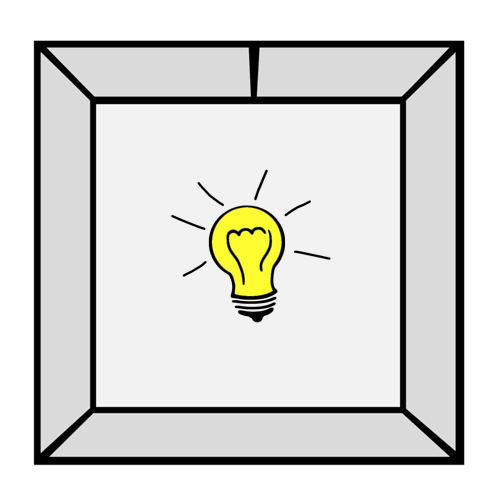
The type of art he did is called pointillism (using tiny dots to form an image) and he was brilliant at it. Ironically, the years of drawing thousands upon thousands of minuscule dots caused permanent nerve damage and led to his tremor. When he put pen to paper, all he could manage were shaky squiggles. He dropped out of art school and stopped creating new work.
A lot of stories end there, but his didn’t—and in a really fascinating way. When his doctor told him the nerve damage was irreversible, he suggested Hansen “embrace the shake.” Faced with the alternative, Hansen did just that. He went home and let his hand go wild, drawing squiggles everywhere. The results were astounding.
The new masterpieces he created from shaky lines were infinitely more interesting and beautiful than his original pointillistic pieces. He was still creating, just in a different way. So he started experimenting with all sorts of techniques, like dipping his feet in paint and walking across a giant canvas or burning designs using a blow torch. One of his most unique endeavors involved slapping hamburger grease on canvas and replicating the Mona Lisa. Yes, really.
Hansen described his reasoning in a TED Talk: By “embracing the shake,” he said, he went from “a single approach to art…[to] having an approach to creativity that completely changed [my] artistic horizons.”
What he saw as his ultimate weakness, the thing that had the power to keep him from creating, actually opened up an entirely new world to him, leaving him asking the question: “Could you become more creative by looking for limitations?”
We’re always told to think outside the box. We’re constantly told to look toward a vast horizon and create magic. But how many of us, like Hansen, get paralyzed by all the choices? We’re surrounded by so many options, so much stuff, that sometimes we don’t know where to start. So we don’t.
This reminded me of another TED Talk I heard. The speaker was William Kamkwamba. You’re forgiven if you’ve never heard his name. He’s from Malawi, a country in southeastern Africa that doesn’t get a lot of airtime.
He had the kind of story most of us hear about Africa. He dropped out of school at 15 because his parents couldn’t afford the fees and famine routinely ravaged his village. His favorite hobby was reading, but there was no electricity in the house—so as soon as night fell, he had to stop.
Few people in his village had electricity; it was something of a luxury. Tired of being limited by the lack of light, he decided to figure out a way to create it himself. He found an old, worn textbook in the local library that talked about wind power and decided that was his answer. Despite his lack of experience or scientific background he set to work, rummaging through the town dump for parts. Sometimes it took him months just to find one small piece. But he was persistent.
In the end, he did it. He created the first windmill anyone had ever seen in his town, and it was mostly from bits and pieces of trash. He’d made electricity. One look at the windmill and you’d probably laugh—among other strange items, a bicycle frame makes up a piece of it.
The important thing is that he changed his whole village. He made it possible for people who couldn’t afford it to have access to electricity. It revolutionized the way they lived. And he did it with next to nothing.
I can’t help wondering: Living in a country in which we’re surrounded by so much choice, and where we have access to countless resources, are we sometimes numbed by it all? Do we lose our creativity because we don’t really have to try? What if we, like Hansen suggested, embraced limitations and created out of nothing, or out of weakness. Would there be more magic?

